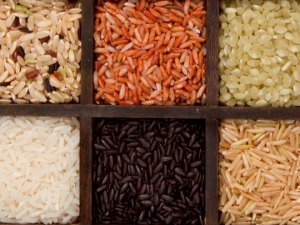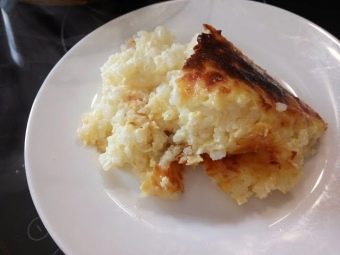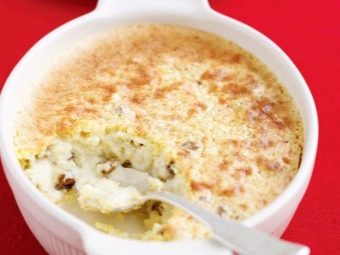Types of rice: what varieties exist, how to choose?

Rice keeps the power of a huge number of people in the world.If lunch or dinner for a modern Russian family is hard to imagine without potatoes, then in Asian countries there is no table without rice. From this cereal create a variety of foods that are the basis of national cuisines of different countries. To cook this or that dish, you need to choose the appropriate grade.
Varieties and their physical properties
There are many kinds of rice in the world. They differ in grain shape, color and processing method.
Ordinary grains, as only peasants see them, are brownish. This is the color of the shell. Before this husk is removed and the rice is additionally processed, it is considered unbreakable.
Forms
On the shelves of shops you can find a cereal having the shape of a grain:
- long;
- medium;
- round.
Long grain rice is white or brown. Reaches a length of eight millimeters. In the process of cooking absorbs a little water, so that the output does not work stuck together porridge. Suitable for dishes in which solid rice grains should crumble. Such cereals are grown in Asia, America and Australia.
The medium grain is about six millimeters long and slightly wider than the long grain one. In these grains more starch. They absorb the liquid much more than the "lanky" fellows. After cooking, they turn into a soft, slightly sticky mass. Medium-grain suitable for cereals and risottos. It happens white and brown. Besides Asia, America and Australia grown in Europe.
Round-shaped rice can be up to five millimeters long. In the process of cooking very much boiled soft. It becomes like "porridge-Malasha." Just for cooking porridge it is best suited. Good product also for casseroles and puddings. The producers of such grain are Japan, China, Italy. They grow round grain in Russia as well as in Ukraine.
Differently processed rice
The grass is processed in one way or another. It affects its taste and physical properties.
Often the buyer in the store sees the so-called polished rice. Sometimes it is called refined. The grain is removed shell - this is the meaning of grinding. The bad thing is that with such a procedure a significant part of the product’s benefits disappears - many valuable substances are found in bran.
Unpolished is said to have undergone minor training. This is usually long rice. These grains are red or brown. On it remains a shell with a high content of mineral substances. The downside of this benefit is that such a product has to be boiled for a long time.
A common procedure is the processing of such grain with steam. In addition, it is still ground and dried. As a result, the grass becomes transparent and yellowish. Such rice does not lose too many useful substances. Good for garnish. In the process of cooking becomes white.
Benefit and harm
The benefits of rice are very high. Only fifty grams of this product per day provide the body of protein necessary for the body. This is a very good diet food. Vegetable fats, which are in this grain, help to keep the figure, and fiber to remove harmful substances from the gastrointestinal tract.
Calcium-saturated product is good for teeth and bones. It also has enough micro and macro elements, vitamins (including those belonging to group B), which are of great importance for the normal functioning of organs and systems in the human body.
Eating rice helps to recover from the disease, normalizes sleep, and even removes bad breath.
Dishes from such grains are useful for liver and heart diseases, as rice helps to remove salt from the body. Rice decoctions are used to eliminate the effects of food poisoning and lowering the temperature.
It is necessary to take into account that a lot of rice can not be eaten. This is especially true for grains that have undergone intensive processing. Among the champions in polishing can be distinguished white refined rice.Healthy people, overlaying the dishes from it, can acquire atherosclerosis and kidney stones. Diabetics are not recommended to eat it.
Unlike white refined rice, the use of black, on the contrary, does not allow the body to absorb a large amount of sugar. For people with diabetes, this cereal is more suitable. Dark rice product, just like white, can be harmful. When it is excessively consumed, pathologies begin in the intestines, not to mention the fact that some people suffer from intolerance to this product.
List of varieties with a description
Now there are many varieties of rice. There are names associated with different producing countries. Uzbek, Chinese, Indian, and so on - to figure out what is not easy for an ordinary buyer.
For example, Basmati grows in India, Pakistan. The shape of its grain is long and thinner than usual to us Russians. This product exudes a delicate aroma of sandalwood oil. They cook spicy dishes typical of this region.
Thai long grain - Jasmine - has the smell of milk. Sweet dishes such as pudding are made from it, because in the process of cooking the beans begin to stick together. In the countries of Southeast Asia, this rice creates a wide variety of foods.
Egyptian Kamolino is a variety of round rice originally from the Nile Valley. It is good to make porridge and side dishes. Widely used in oriental cuisine.
Italian Arborio is a large grain, which perfectly absorb the aromas of spices and other components of the dish. Risotto is made from such rice in Italy.
Black rice (from Tibet) after cooking becomes purple. Used for sweet food, because it has a pronounced nutty flavor.
The French Camargue, migrated to this country from Thailand, is a long red grain. It also smells like nuts. It is used in salads and side dishes.
Red Samba rice is grown in Sri Lanka. It is medium or round. Although this variety does not extend far beyond the region. It is used in Sri Lanka and in the south of India.
Uzbek Devzira has thick dense grains of light brown color. Real rice is made from such rice. In the process of cooking the grass brightens and gets a golden hue.
There is also the so-called wild rice. The color is brown and even black. Collect it by hand, so this miracle is expensive for the buyer. It is not cooked on its own, but used as an additive to more familiar rice.
Now on sale can be found even yellow or golden rice. This is a product of genetic engineering. It has a high content of beta keratin, which gives the product an unusual color. By consuming it, you can replenish the supply of vitamin A in the body, with the fats and starch in such grains - at least.
Criterias of choice
When choosing rice you need to take into account a number of points which will allow you to purchase a good quality product.
- If there are broken grains in a pack, it is better to prefer packaging with more attractive looking contents. In the process of cooking, the fragments of rice grains stick together and the dish can be spoiled.
- Completely white-looking rice - unripe.
- Yellowed says that it was stored incorrectly - the room was wet. Hence, in such a product may be a fungus.
- The shelf life of rice can range from one to one and a half years. This point should also be considered when purchasing.
- The choice depends on which dish to cook and which rice will turn out to be more useful for specific people, taking into account its qualities.
High quality rice has the same grain size, has a clear form - without chips. In the package with the product should also not be any impurities.
However, recently there is another problem with the purchase. Instead of the usual product, you can buy a fake, which does not differ in appearance from ordinary rice.
For its production uses rice flour.It is mixed at best with starch, and at worst, with plastic. From this substance make the individual elements in the form of grains. This product is quickly boiled soft.
Check the quality of such goods only after purchase. To avoid any doubts, it is better to buy rice from long-established producers.
Use in cooking
In cooking, he finds the widest application. It is perfectly combined with meat and fish. It can be added to soups and is as an independent dish. This product makes an excellent pie filling.
Each country has its own branded methods of cooking such grain. This Japanese sushi and Caucasian pilaf, and sweets of the countries of Southeast Asia.
In addition to the grains of different types, intended for various culinary masterpieces, rice flakes are also used. They are poured with milk and consumed in the morning.
To give the rice an unusual taste, it can be boiled in broth, not on the water. Adding spices will make the dish original. Even rice porridge can be given delicacy, if instead of regular sugar, honey is used for filling. Nuts, fruits and yogurt added to this dish will also make it taste new.
See which video is the most useful, see the following video.

































